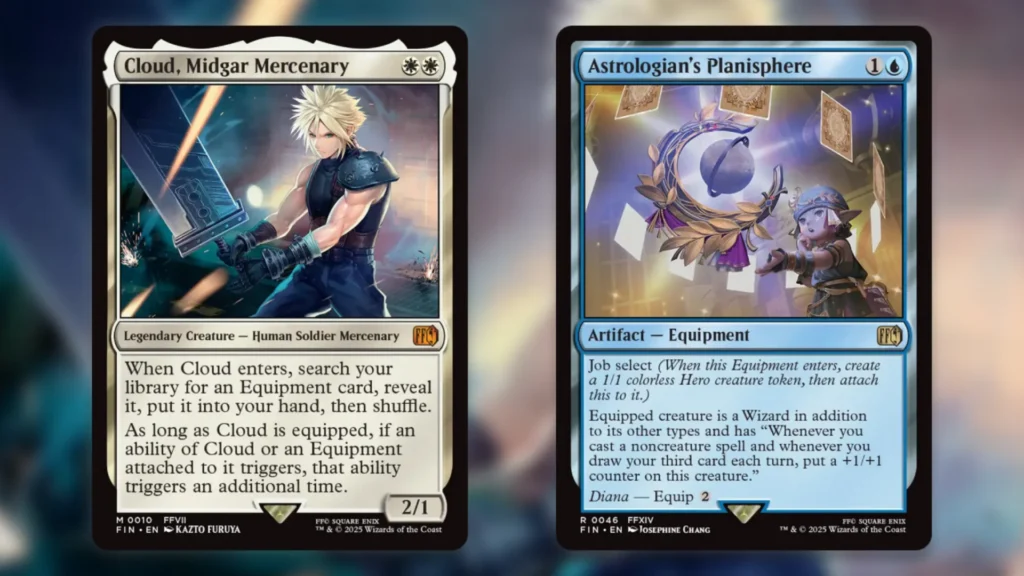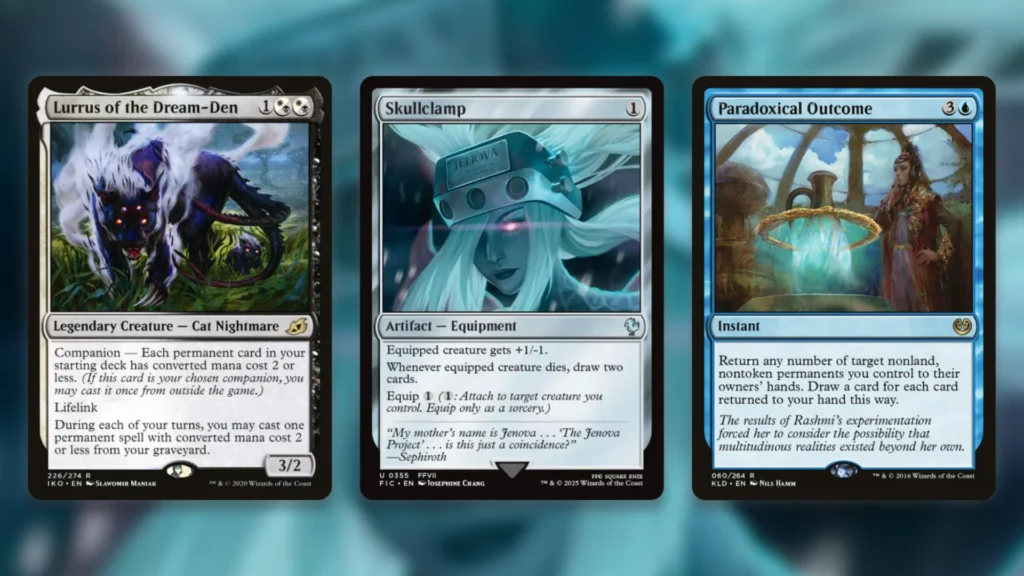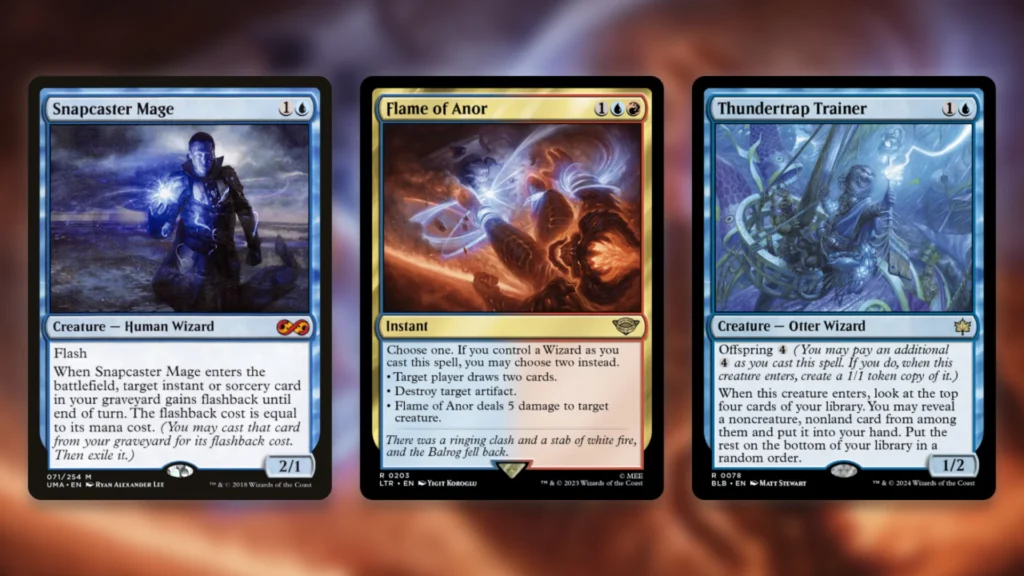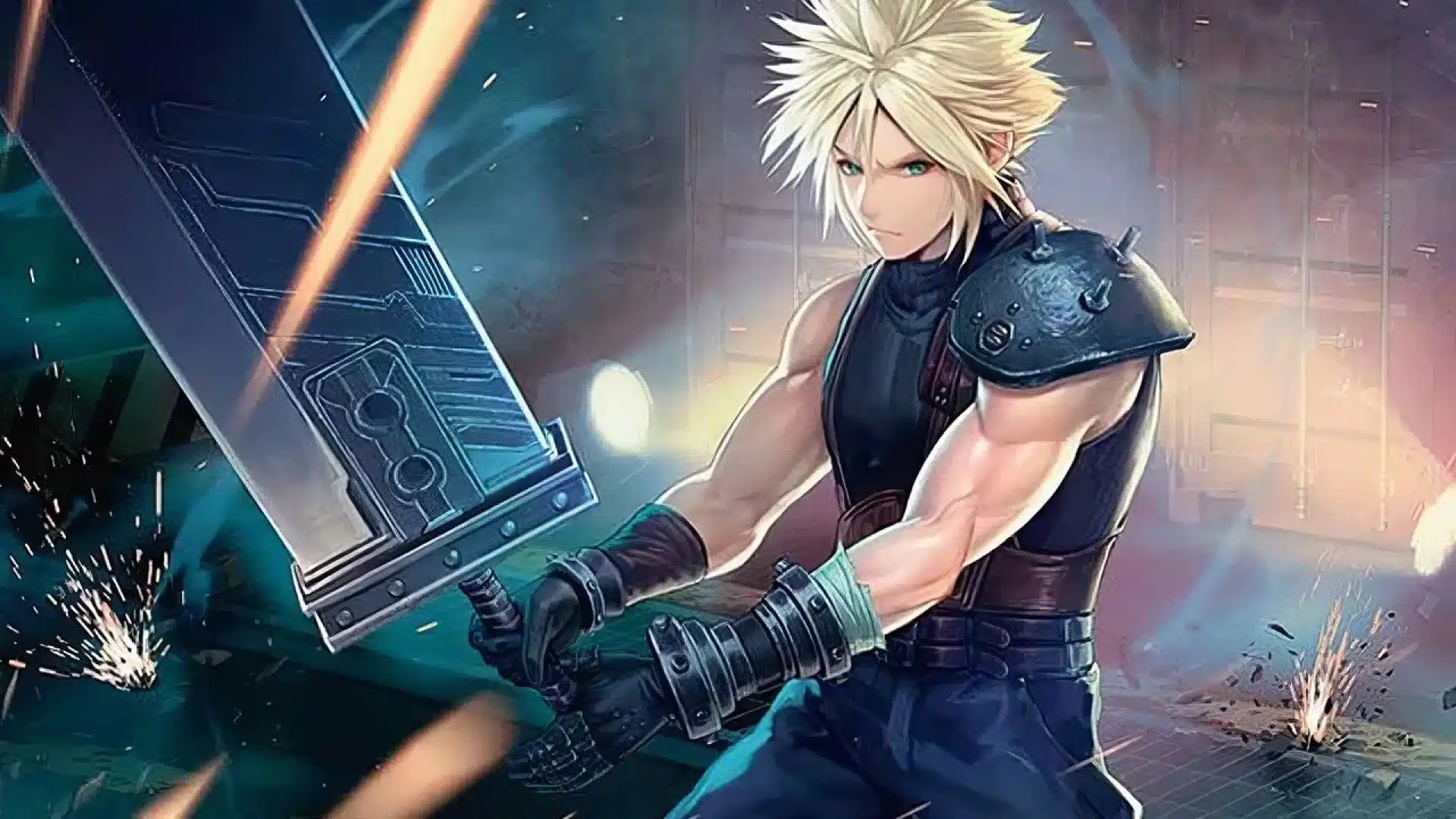Right now, the whole Magic: The Gathering community is holding its breath as it waits for the Edge of Eternities debut tomorrow. With all this space-themed excitement in the world, however, it’s easy to forget that Final Fantasy is still making its mark on the game. Players continue to test cards from Final Fantasy in a range of formats, and this week one such experiment has been successful in the toughest MTG format of all: Vintage.
In yesterday’s Vintage Challenge, DB_revenantkioku piloted a Lurrus PO list featuring two full playsets of Final Fantasy cards to a top-eight finish. It’s impressive enough seeing one new card played in limited quantities in Vintage. Two full playsets are pretty much unheard of. Whether these innovations become lasting features of the deck remains to be seen. For now, however, it’s exciting to see fresh tech in Magic’s most ruthless arena.
Final Fantasy Cards In Vintage Lurrus PO

The two Final Fantasy cards that DB_revenantkioku added to Lurrus PO are Cloud, Midgar Mercenary and Astrologian’s Planisphere. Both are fairly outside-the-box inclusions for Lurrus PO, which is a long-established Vintage deck by this point.
For those unfamiliar, Lurrus PO stands for Lurrus Paradoxical Outcome. It’s a grindy Control deck built around the two title cards. Lurrus is a free include in the Companion slot, and gives you extra gas in the late game via its recursion ability. Paradoxical Outcome, in the context of Vintage, is one of the most efficient draw spells in all of Magic: The Gathering. Vintage is full of incredibly cheap spells, and zero-mana Moxen. With Outcome, a board full of these becomes a hand full of options.
Landing a good Outcome typically draws you enough removal and countermagic to take over the game. At that point, you can ride any given creature to a slow victory. Cloud and Planisphere complement this strategy in interesting ways.
Cloud is particularly novel here, since Lurrus PO doesn’t tend to play Equipment at all normally. As a universal Equipment tutor on a body, Cloud allows the deck to splash a few key pieces. Skullclamp is the big one, but DB_revenantkioku also includes a silver bullet copy of Lion Sash. This can come in clutch against a number of prominent Vintage strategies, like Dredge and Lurrus mirrors.
Astrologian’s Planisphere is an Equipment itself, so it has immediate synergy with Cloud. On top of that, it also gives the deck another angle of attack. By itself it’s a two-drop creature that quickly scales out of hand. Later on you can equip it to a different creature, however, the best target being Tamiyo, Inquisitive Student thanks to its cheap Flying body.
Significant Synergies

These two cards, and the deckbuilding choices DB_revenantkioku made around them, take Lurrus PO in a new direction. With just a few key Equipment in the deck, Cloud becomes a cheap multi-tool that can get you out of a range of situations. We’ve already covered its graveyard hate capabilities via Lion Sash above, but things go deeper than that.
The fact that Cloud has one toughness makes it an ideal Skullclamp target. You can play Cloud for two, grab Skullclamp, then drop and attach it to Cloud to immediately draw four cards. Cloud’s trigger-doubling effect kicks in here, giving you twice as many cards as usual. Even in Vintage, this is a ton of card advantage, complementing Lurrus PO’s core strategy of ‘generate overwhelming resources’ nicely.
Cloud and Planisphere also play great together. If you attach Planisphere to Cloud, it’ll receive two counters each time you play a noncreature spell or draw your third card. It’s not hard for this to get out of hand, creating a huge threat that can beat your opponent down in no time.
Both cards also play perfectly alongside the deck’s two namesake pieces. Casting Cloud again via Lurrus gives you an extra tutor effect, and Planisphere gets you an extra token. The same is true when you bounce them back to your hand via Outcome. The key to this deck’s success is running permanents that are either free to cast or generate some kind of value on entry. Both Cloud and Planisphere fulfill the second criteria handily.
Stick Or Twist?

While a top eight result in a Vintage Challenge is nothing to scoff at, it’s clear this Final Fantasy variant of Lurrus PO has a ways to go before it’s at the top of the charts. The biggest obstacle it needs to overcome is convincing players it’s a better choice than the existing shell.
Right now, most Lurrus PO lists feature a bit of a Wizards theme. Thundertrap Trainer serves as a solid card advantage/selection piece, great for recasting via Lurrus or picking up with Outcome. Snapcaster Mage is similar, letting you reuse your interaction pieces or even Outcome itself in a long game. Both are Wizards, which lets you run Flame of Anor at max strength. When consistently enabled like this, Flame is one of the most powerful instants in any MTG format.
Outside of these differences, the Lurrus PO core is pretty consistent. The question, then, is whether or not this new Final Fantasy Equipment package is a better option than the Wizard one.
On the surface, Wizards looks like an easy victor here. It’s more reactive, giving you scope to interact with your opponent through Flame and Snapcaster plays. It’s also easier on the mana; even in Vintage, that double white on Cloud is a real cost.
On the other hand, the Equipment package offers a lot more versatility thanks to Cloud’s tutoring. You can grab what you need when you need it, and the huge bursts of Skullclamp card advantage can take that even further.
Time will tell which version of the deck wins out. For now, it’s just exciting to see new cards see real play in Vintage.
Stick with us here at mtgrocks.com: the best site for Magic: The Gathering coverage!
